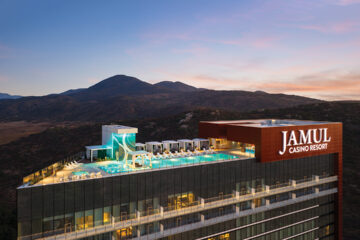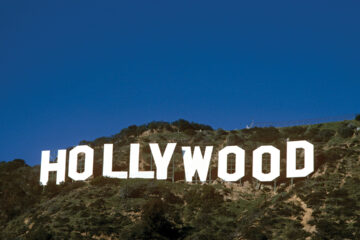Not In My Wildest Dreams

Not In My Wildest Dreams
The trip of a lifetime to Washington, D.C.
Posted on July 3, 2018
“We are such stuff as dreams are made on” -William Shakespeare, The Tempest
A recent journey was so memorable I still must pinch myself to believe it. It wasn’t my first trip to our nation’s capital, but it was the best. National ARCS (Achievement Rewards for College Scientists) Foundation, now 60 years old, held its conference in Washington, D.C. this year and, as a member of the San Diego Chapter, I decided to attend. Twice before, I was unable to join the group for the trip. Having long wanted to participate, I determined nothing would stop me this time. Since the Metropolitan Washington Chapter was celebrating its 50th anniversary, this one was certain to be remarkable. It turned out to be everything I dreamed, and so much more than I hoped.
First stop was the historic Willard InterContinental Washington, an elegant Beaux-Arts hotel on Pennsylvania Avenue, just two blocks from the White House. This was our home for the week. The Willard traces its official beginning to 1847. It was restored, and re-opened in 1986 with great celebration. Additional restoration was completed in the 1990s. On the U.S. National Register of historic Places, the Willard has been the choice of presidents, ambassadors, senators, and cabinet members. From February 23 until March 4 of 1861, Abraham Lincoln resided there. The Willard proudly makes it known that “every president since Franklin Pierce has either slept in or attended an event at the hotel at least once.” Six Vice Presidents have called the Willard home at some point, and many historical gatherings have been held in this gracious building so steeped in cultural history. Guests have included Mark Twain, Walt Whitman, the Duke of Windsor, Harry Houdini, Gloria Swanson, Emily Dickinson, and Charles Dickens.

The second stop provided a personalized tour of the Capitol, the home of the United States Congress, with visits to the Capitol rotunda, the old Supreme Court Chamber, examination of the extraordinary National Statuary depicting members of Congress and other nationally significant people, and priceless historical documents and ephemera. It was very moving to stand on the spot where Abraham Lincoln’s desk sat in the old Congressional Chamber. It was also impressive to inspect high school students’ winning art entries displayed prominently nearby. Two student winners per congressional district are selected each year.

On we went to the Library of Congress, the largest library in the world, the repository of more than 164 million items, and nearly 25 million cataloged books. This sturdy institution is the oldest federal cultural entity in the country. The buildings of the Library of Congress, founded in 1800, are works of art in their own right.
The Newseum held me spellbound for a good part of a day. A privately funded museum, this interactive treasure boasts seven levels and 15 galleries. Here, visitors learn about forms of communication, the print press, and the history of radio, television, and the digital world in which we live. Emphasis is on a free press. People gather to view concrete sections of the Berlin Wall and linger to study Pulitzer Prize photographs that date back to 1942. It is a place where there is so much to do. A side note — the Newseum restaurant food is unusually good. I returned on two separate occasions to enjoy the fresh meals.
The National Museum of American History, one of a group of museums that comprise the Smithsonian institution, never fails to fascinate, and our tour was no exception. Immediately upon entering, we were confronted with a full-size Batmobile, spotlighted with an array of LED lights that created an otherworldly appearance. It was on loan and, judging from the public reception, could remain on exhibit forever, it was that popular. Founded in 1964 (the Smithsonian goes back to 1846), this amazing venue possesses more than three million historical objects that range in subject matter from locomotives to music and the entertainment industry, communities, social movements, design, prints, photos, drawings, religion, and the gowns of First Ladies of the United States. I had to be pried away from this engaging museum.

Then, off to the Supreme Court we went. This national historic landmark was built in 1935, and its impressive exterior is matched by an exquisite interior. Our bus left the Willard following heavy security measures that included sniffing dogs. As excited as we already were, nothing prepared us for what happened next. Suddenly, we realized we were being provided full police escort with sirens and flashing lights, one police car in front of us and one behind. Traffic was stopped for us. Upon arrival, again with heavy security, we got table assignments, went into the Great Hall with its enormously high ceiling, and found our table places. After proceeding into the Supreme Court Chamber, we were joined by Associate Justice Anthony Kennedy, a gracious, modest, friendly man who spoke with us informally about the history of the Court and the process for selecting cases to be argued before the justices. He was in no hurry, and enjoyed sharing tales with us. We moved from the Chamber to two imposing wood paneled rooms and an outside courtyard for cocktails and tray-passed bites. In the rooms were numerous large oil paintings of former Supreme Court justices. They were definitely imposing. Justice Kennedy and his wife, Mary, visited effortlessly among the guests. Then, we moved to the gloriously appointed Great Hall with beautifully set and decorated tables. The expansive space glittered. The Kennedys stayed for dinner, the menu for which Mary selected, with the dessert recipe taken from the Washington, D.C. ARCS cookbook. The wait staff was thoughtful, kind, and very proud, with each server holding one arm behind his or her back during duties. Dinner guests remained late into the night, all visiting animatedly. Justice and Mrs. Kennedy were still there as I departed the high energy scene.Guests were given copies of the ARCS cookbook as they left.

I sped through the fascinating and intense Spy Museum and the handsome Smithsonian National Museum of African American History and Culture on separate days, ending my Washington, D.C. stay with dinner and a comedic performance at the Kennedy Center for the Performing Arts. It was my birthday and I was able to celebrate it at this magnificent site, which, by the way, is adjacent to the famous Watergate complex. My long ago husband, Lowell Davies, served on the Advisory Committee for a National Cultural Center, at the behest of President Dwight Eisenhower. He spoke with pride of his letter of reappointment by President John F. Kennedy. Following J.F.K’s assassination, the Cultural Center became the Kennedy Center. When I shared that story with Caroline Kennedy at The Bishops School earlier this year, there was instant recognition on her face of that historical arc.
Pinch me. Will I waken from the dream? Darlene G. Davies
Photography by Paul Marshall







Comments